Every cloud has a silver lining, and every NFL team does some things well. Even the worst team has certain plays and tendencies with which the players are productive.
We've gone through Football Outsiders' extensive stat databases to point out specific strengths of each team in 2017: one for offense and one for defense. Some of these splits are significant for illuminating the strengths and weaknesses of each team's personnel. Other splits tend to oscillate wildly from year to year, and a great performance in 2017 might not indicate that a team will be equally strong in the same ways in 2018. Either way, the numbers provide an interesting window into what each team did right last season.
Football Outsiders' advanced metrics are explained here. The most important is DVOA, which measures success on each play compared to the league average adjusted for situation and opponent. Because it is measured on a per-play basis, DVOA can easily be separated to measure specific splits; you'll see a lot of those ratings below.
Charting metrics including personnel, pass pressure and broken tackles come from Sports Info Solutions unless otherwise noted. You can find many more of these stats for each team in our preseason book Football Outsiders Almanac 2018, which is now available online.
Scan through all 32 teams by division, or click on any team's logo here to skip ahead:
AFC EAST
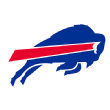
Buffalo Bills
Offense: Third-down rushing
The Bills ranked 19th in rushing DVOA overall but fifth on third and fourth downs.
Defense: Cornerback depth
Buffalo ranked third in DVOA against opposing No. 2 receivers and first in DVOA against opponents' No. 3 and No. 4 wide receivers. The Bills' second, third and fourth cornerbacks left this offseason, but safety Micah Hyde, who often covers receivers in the slot, is still in Buffalo.
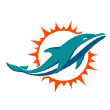
Miami Dolphins
Offense: Goal-line offense
The Dolphins' offense was 27th in DVOA overall but improved to fifth in goal-to-go situations.
Defense: Short-yardage defense
Miami allowed opponents to convert on only 50 percent of short-yardage runs, third in the league. (Short yardage is defined as 1-2 yards to go on third down, fourth down or the goal line.)
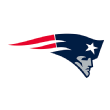
New England Patriots
Offense: Outside passing
The Patriots had the highest DVOA in the league on passes to both the left and the right sides of the field. (They ranked ninth on passes to the middle.)
Defense: Red zone
The Patriots seem to be the only defense that is consistently better in the red zone than it is overall, year after year. Last year was truly extreme, as the Patriots ranked 31st in overall defensive DVOA but improved to fourth (behind the Chargers, Vikings and Ravens) once opponents moved into the red zone.
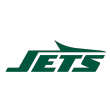
New York Jets
Offense: Running on third downs
The Jets had the best DVOA in the league running the ball on third and fourth downs. However, the Jets were 26th on first down and 32nd on second down, so that third-down split is likely unsustainable.
Defense: Keeping it close
The Jets had the fifth-best defensive DVOA in the NFL when they were losing by more than a touchdown.
AFC NORTH

Baltimore Ravens
Offense: Keeping Joe Flacco upright
Flacco was knocked to the ground on just 10.9 percent of pass plays, including those nullified by penalties. This was the third-lowest figure in the league behind only those of Derek Carr and Jay Cutler.
Defense: Short-pass defense
The Ravens were the No. 1 defense in the league against short passes, defined as those up to 15 yards through the air. Baltimore ranked first or second against short passes to the left, middle and right.

Cincinnati Bengals
Offense: Running back screens
Cincinnati gained 10.4 yards per pass with 52.5 percent DVOA on running back screens.
Defense: Defending against curl routes
The Bengals ranked sixth in DVOA defending the most common pass route in the game, the curl route.

Cleveland Browns
Offense: Running the ball
It's hard to find a silver lining in an 0-16 season, but the silver lining for the Browns is a strong piece of evidence against the classic conventional wisdom that winning teams start by establishing the run and stopping the run. The Browns had the worst passing game in the NFL, but their running game was above average, ranking ninth in DVOA overall. Cleveland's running game ranked in the top dozen on first down, second down and third down as well as in the red zone. Meanwhile, on the other side of the ball ...
Defense: Suppressing the run
Cleveland stuffed opposing running backs for a loss or no gain on a league-leading 30 percent of carries.

Pittsburgh Steelers
Offense: Pass protection
The Steelers ranked No. 2 in pressure rate allowed and No. 1 in adjusted sack rate allowed (sacks and intentional groundings per pass play, adjusted for situation and opponent).
Defense: Pass pressure
Turn it around to the defense, and the Steelers were almost as good. They ranked No. 4 in pressure rate allowed on defense and No. 1 in adjusted sack rate. However, they had to manufacture a lot of sacks with blitzes, as 41 percent of their sacks came from defensive backs or inside linebackers.
AFC SOUTH

Houston Texans
Offense: Catching passes
Texans receivers dropped only 21 passes, or 3.6 percent. Both numbers ranked third in the NFL last season.
Defense: Stopping runs up the middle
Houston ranked seventh in the NFL in adjusted line yards on runs up the middle. It also ranked seventh in the percentage of running back carries stopped for a loss or no gain (22 percent).
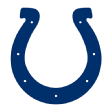
Indianapolis Colts
Offense: Short yardage
The Colts converted 81 percent of runs in short-yardage situations, second in the league behind Kansas City. (Short yardage is defined as 1-2 yards to go on third down, fourth down or the goal line.)
Defense: Defending the run on first down
The Colts were the No. 1 defense in the league against the run on first down. That included just 3.1 yards per carry, a yard less than the NFL average on first downs. This would be more impressive if the Colts had not ranked 26th against the run on second down and 32nd against the run on third down.
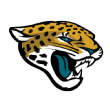
Jacksonville Jaguars
Offense: First-quarter offense
The Jaguars ranked first in offensive DVOA in the first quarter of games but just 21st the rest of the time. The bad news is that there's no evidence of any year-to-year consistency in teams being better on offense early or late in games.
Defense: Coverage without pressure
Sure, it was #Sacksonville all season, but the Jaguars also excelled in coverage when there wasn't pressure. They had a league-best 14.3 percent DVOA and just 6.3 yards allowed per pass play when the quarterback was not under duress.
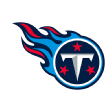
Tennessee Titans
Offense: Heavy formations
The Titans were fantastic with six or more offensive linemen, gaining 7.5 yards per play with 46.5 percent DVOA. Both figures were by far the best among the 10 teams that used six or more linemen at least 3.0 percent of the time.
Defense: Deep passes
Although the Titans had the worst DVOA in the league against short passes, they ranked third (behind only Jacksonville and Buffalo) against deep passes (passes traveling 16 or more yards through the air).
AFC WEST
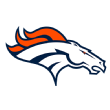
Denver Broncos
Offense: Running on second-and-long
Denver was fifth in the NFL with 5.1 yards per carry and ninth in DVOA when running the ball on second down with 7 or more yards to go.
Defense: First-quarter defense
This is one of those inexplicable stat splits that's interesting but doesn't really teach us anything: The Broncos ranked No. 1 in defensive DVOA in the first quarter of games, then ranked No. 31 (ahead of only Miami) in the second quarter of games. Then they were back to being the No. 3 defense in the league after halftime. Weird.
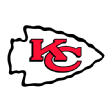
Kansas City Chiefs
Offense: Broken tackles
The Chiefs led the NFL with 166 broken tackles, according to Sports Info Solutions charting. Not only did Kareem Hunt lead the NFL with 89, but also Tyreek Hill was fifth among wide receivers with 19 and Travis Kelce led all tight ends with 19.
Defense: Stopping long runs
Although the Chiefs had a poor run defense overall -- the worst in the NFL, according to DVOA -- they were good at preventing long runs by opponents. Kansas City allowed only 0.55 open-field yards per carry, defined as the yards a running back gains once he's 10 yards past the line of scrimmage. That ranked fifth in the NFL in 2017.
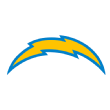
Los Angeles Chargers
Offense: Avoiding three-and-outs
The Chargers went three-and-out on only 16.8 percent of drives, the second-best figure in the league behind Pittsburgh at 15.6 percent.
Defense: Red zone defense
Los Angeles had the league's best red zone defense according to DVOA, 43.5 percent more efficient than the league average. The Chargers allowed just 1.88 yards per play in the red zone, more than 1 yard per play below the NFL average, and allowed a touchdown on just 36.1 percent of red zone drives.
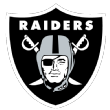
Oakland Raiders
Offense: Pass protection
The Raiders allowed a league-low 27 percent pressure rate when opponents blitzed. Overall, the Raiders were third in pressure rate allowed. They have not ranked outside the top three since 2014.
Defense: Tackling
The Raiders ranked fourth with just 94 broken tackles in 2017, after ranking fifth in fewest broken tackles in 2016.
NFC EAST

Dallas Cowboys
Offense: Passing against the blitz
The Cowboys had just 6.2 yards per play and 2.0 percent DVOA against a regular pass rush but 7.2 yards per play and 36.1 percent DVOA against five or more pass-rushers.
Defense: First-down defense
Although the Cowboys ranked 25th in overall defensive DVOA, they were ninth on first downs, including second against the run behind Indianapolis.

New York Giants
Offense: Red zone passing
Although the Giants' offense struggled on most of the field, Big Blue ranked sixth in passing DVOA inside the red zone.
Defense: Avoiding (small) penalties
The Giants were best in the NFL with just 33 penalties on defense, including those declined and offsetting. However, those penalties led to an above-average 400 yards for the opposing team, in part because of five pass interference penalties of more than 30 yards.

Philadelphia Eagles
Offense: Red zone passing
The Eagles weren't just the best pass offense in the red zone last season; by DVOA, they had the third-best pass offense in the red zone since 1986. Only the 1999 Chiefs and 1993 Eagles were better.
Defense: Stopping spread runs
The Eagles had the best DVOA in the league against runs from formations with three or more wide receivers, as well as the best DVOA in the league against runs from shotgun formations.

Washington Redskins
Offense: Yards after catch
Washington ranked third in the NFL with 6.15 average yards after the catch on receptions last season.
Defense: Pass pressure
The Redskins' pass rush is nowhere near as heralded as that of others around the league, but according to Sports Info Solutions charting, Washington led the league with a 36.7 percent pressure rate on defense. It also ranked fourth in adjusted sack rate.
NFC NORTH
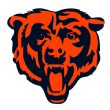
Chicago Bears
Offense: Red zone rushing
The Bears ranked No. 1 in DVOA rushing in the red zone, even though they were 17th in rushing DVOA overall.
Defense: Third-and-long
Chicago's defense ranked second in the league in DVOA when it was third down with 7 or more yards to go.
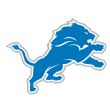
Detroit Lions
Offense: Play-action passing
The Lions had a league-leading 9.4 net yards per pass with play-action and ranked second with 60.6 percent DVOA.
Defense: Covering top receivers
Detroit improved from 26th in DVOA covering No. 1 wide receivers in 2016 to third in the league in 2017.
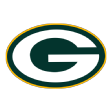
Green Bay Packers
Offense: Avoiding penalties
The Packers had a league-low 29 penalties on offense, including those that were declined and/or offsetting.
Defense: Defending against spread runs
Green Bay ranked third with minus-16.8 percent DVOA against runs on which there were three or more wide receivers in the game. Only Philadelphia and Minnesota were better.

Minnesota Vikings
Offense: Play-action passing
Minnesota ran more play-action than any other offense (30 percent of passes) and had the league's best DVOA rating on these passes, 69 percent more efficient than average. (It averaged 8.8 net yards per pass, which ranked fourth.)
Defense: Coverage all over the place
Minnesota ranked second in DVOA defending tight ends and led the league in DVOA defending running backs. It also led the league in DVOA covering wide receivers out of the slot.
NFC SOUTH

Atlanta Falcons
Offense: Passing against DB blitzes
Despite all his success in 2016, Matt Ryan averaged only 4.9 yards when opponents blitzed a defensive back that season, according to ESPN Stats & Info. In 2017, that changed dramatically, as Ryan averaged 9.4 yards per pass against DB blitzes, the second-best mark in the league.
Defense: Defending in the red zone
The Atlanta defense was overall below average but stiffened up in the red zone, ranking sixth in DVOA inside the 20, including fourth against runs inside the 20.

Carolina Panthers
Offense: Third-down runs
Carolina ranked second in DVOA when running on third or fourth downs. The Panthers were second with 6.67 average yards (behind Jacksonville at 7.20) and second with a 70 percent conversion rate (behind Green Bay at 71 percent).
Defense: Defending play-action
The Panthers' defense allowed an absurdly low 4.9 yards per pass against play-action. The league average was 7.3 yards. Carolina and Cincinnati were the only two defenses to allow fewer yards against play-action passes than against other passes.
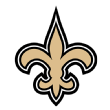
New Orleans Saints
Offense: Plays out of empty backfields
New Orleans led the NFL with 8.9 yards per play and 59.6 percent DVOA out of empty backfields.
Defense: Tackling
The Saints had the fewest broken tackles in the league, just 82. Out of 105 defenders with double-digit broken tackles in 2017, only one played for the Saints: cornerback Ken Crowley, with 11.

Tampa Bay Buccaneers
Offense: Third-down passing
The Bucs averaged an above-average 7.2 yards to go on third downs, but once we adjust for that, Tampa Bay ranked third in third-down passing DVOA, trailing only the Eagles and Rams.
Defense: Avoiding penalties
The Bucs gave away only 229 yards on defensive penalties, when every other defense was at 296 yards or higher.
NFC WEST
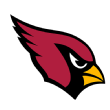
Arizona Cardinals
Offense: Second-and-short
Arizona ranked fourth in DVOA on second-and-short (1-2 yards to go) but ranked 25th or worse in every other down-and-distance combination.
Defense: Base defense
Arizona had the league's best DVOA and allowed a league-low 4.4 yards per play when using base defense (four defensive backs).

Los Angeles Rams
Offense: Yards after catch
The Rams led the NFL with 11.4 average yards after the catch on passes thrown behind the line of scrimmage and 6.6 average YAC overall.
Defense: Early-down pass defense
The Rams ranked No. 1 in pass defense DVOA on first downs and No. 2 in pass defense DVOA on second downs. However, they dropped to just 16th on third and fourth downs.
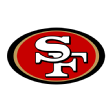
San Francisco 49ers
Offense: Running to the left side
Picking a split here that just represented the games Jimmy Garoppolo started would be too easy, so let's look at something for the 16-game season. According to FO's adjusted line yards metric, which cuts runs at specific lengths to separate the blocking from what the back gains on his own, the 49ers ranked sixth in the league running around left end and fifth in the league running behind left tackle.
Defense: Defending against tight ends
San Francisco ranked fifth in DVOA covering tight ends.

Seattle Seahawks
Offense: Late-game offense
The Seahawks had the league's best offensive DVOA in the fourth quarter and overtime.
Defense: Coverage on non-wide receivers
Seattle ranked third in the league in DVOA covering tight ends and second in the league covering running backs. It was the third straight season in which the Seahawks ranked fifth or better covering running backs in the passing game.
